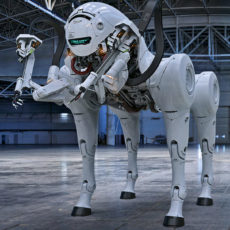
Researchers from Johns Hopkins University and Stanford trained an AI-powered robot arm to perform at the level of a human doctor by simply have it watch surgery videos.
The researchers use imitation learning to train a $2.5-million da Vinci Surgical System robot to perform three fundamental tasks required in surgical procedures: manipulating a needle, lifting body tissue, and suturing. For each of these scenarios, the robot trained on the team’s model performed the same surgical procedures as skillfully as human doctors. It combined imitation learning with the same machine learning architecture that underpins ChatGPT, but using a language that breaks down the angles of robotic motion into math.
- Build your own awesome, wearable mechanical hand that you operate with your own fingers.
- No motors, no batteries — just the power of air pressure, water, and your own hands!
- Hydraulic pistons enable the mechanical fingers to open and close and grip objects with enough force to lift them. Every finger joint can be adjusted...

It’s really magical to have this model and all we do is feed it camera input and it can predict the robotic movements needed for surgery. We believe this marks a significant step forward toward a new frontier in medical robotics,” said Axel Krieger, senior author of the paper and assistant professor in JHU’s Department of Mechanical Engineering.









